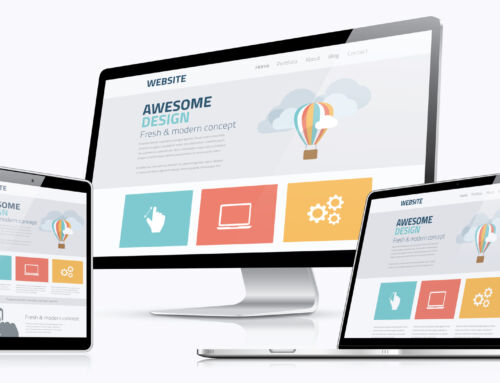
The more engrossed in the digital marketing strategy a company becomes, the more reliant business goals will be on its online presence. Identifying and replacing components that are outdated or don’t take full advantage of user behavior takes time and money, but revamping your website is always worth the investment.
Existing Website Redesign Preparation
The very beginning of your website redesign project is to consider why you want a newly redesigned website to begin with. Typically, business owners look to update their site due to one of the following:
- An old web design is causing users to turn away before exploring the website content.
- Your brand image and identity have changed, and your site needs to reflect the update.
- Industry market changes have led to different site architectures being more effective.
No matter why your company website needs a facelift, it’s important to have a final vision in mind that you can create a to-do list for. There are several minute details that go into a successful website that make a thorough plan crucial.
When Should Revamping Website Projects Be Done?
Knowing how often to redo and revamp your site will help determine how you approach the task based on budget and time constraints. This goes for site work done either internally or through an agency.
A simple question your team members can ask themselves is whether the company’s current site is still providing users with the desired representation. If the answer is anything but a resounding “Yes!” it may be time for an update.
You’ll update your site’s content marketing, number of pages, compatibility with mobile devices, search engine optimization (SEO) and brand image. Each factor plays into the website redesign process and needs dedicated time to fully develop.
Moving Through Your Website Redesign Process
Now that you have a better idea of why you want to do a website redesign and what the end goal is, it’s time to take inventory of what you already have available. Look into:
- Keyword strength in your SEO content
- Current website performance metrics
- The demographics currently visiting and how they align with your target
- Design elements used by the competition
- The agency or platform your site is managed through
We’ll go through each of these five key website redesign tips to outline their importance in a way you can apply to your own site.
1. Search Engine Optimization
A new site is the perfect opportunity for your marketing team to comb through the entire website and see which pages perform the best for search engines and discovery. Generating new leads requires your site being found in the first place.
Landing pages are an example of SEO-heavy content that looks to funnel visitors to a sale, a part of conversion rate optimization. Various marketing analytic platforms are available, often as part of your website platform.
Bring Over Strong Content
If there are any pages with high search engines results page (SERP) results, you may want to transfer them during the website revamp. The easiest way is to list each page you’re bringing over and give the list to your webmaster to create a 301 redirect. This will bring anyone who uses the old URL straight to the new and improved page.
The final step in SEO prep is to do new keyword research that reflects your industry’s current interests. Try to focus on one or two keywords that fit best with what your business has to offer on each of its website pages.
2. Further Performance Analysis
SEO is key to discovery, but a poorly performing site can quickly drive away the traffic you’ve worked to generate. Your current website redesign will look to improve on existing pieces while adding new functionality through different page layouts or self-service options.
Remember to take your analytics a month at a time to see how your changes are impacting performance. Being able to turn a poor user experience around not only makes that user more excited to visit, but it puts your company on an upward trend in their mind.
The information you’re looking for can be found within platforms such as Google Analytics, a perfect starting point as that’s your primary search engine of choice. If you aren’t sure which statistics to put effort into improving, start with the following before you dive deeper:
- Time spent on each page
- Bounce rate (users who only visit one page, then leave)
- Unique visits and overall site views
- Ongoing SEO performance
- Landing page and sales funnel lead and conversion rates
- Backlinks with authoritative sites in your industry
A good website redesign, whether for a portfolio or an e-commerce site, will combine these analytics with intuitive UI/UX to be as user-friendly as possible.
3. Identify Current and Target Users
Depending on your business, it may be difficult to separate your passion from the practical side when you redesign your website. Remember, the site you’re creating is to entice visitors to purchase a product or schedule an appointment. It’s all about what they want to see.
Creating extra value through content that resonates with your key demographic is an excellent way to create the base content for your website. What you create will change based on the target, so don’t forget to leverage things like a specific landing page for each demographic.
Put Yourself in the User’s Shoes
An exercise you and your team can do is to try and empathize with your preferred website visitors. If you’re selling roofing material, put yourself in the shoes of a contractor or DIY homeowner.
Go through their journey of searching through your site and take note of any areas that caused a negative experience, such as long load times or misaligned images. New visitors are quick to leave a poorly performing site and head to a competitor instead.
4. Compare Yourself to the Competition
Capturing the attention of your target audience is the next priority as you redesign your website. A website revamp lets you create a new brand identity to better suit your market and industry, keeping those key users on your site even longer.
You shouldn’t base your newly designed website on the same layout as your competition. Instead, see which elements stand out to you as you scroll through.
What to Take Note Of
When exploring competitor websites, consider the follow:
- Are there specific pages you feel would drive more traffic if implemented on your own site?
- Do you notice particular sections or components that are more user-friendly?
- Is it a new website or new business looking to snag your potential customers?
- Is the site mobile-friendly with an appealing color palette?
As your redesign plan becomes more and more fleshed out, remember to schedule regular analytics once going live to see which pages receive the most visits. Dig deeper into low-performing pages and consider new ideas to generate more leads site wide.
5. Decide Between a Managed and an In-House Site
Redesigning your website takes the skills of a project manager, marketing team and webmaster or developer. Having each function of a site covered can seem like another addition to the list of pain points that come with redesigning websites, but it’s a requirement for success.
Website redesigns can be handled with your own staff or by an external marketing or development agency. For larger sites with hundreds of individual pages, you may prefer to have a dedicated team redesign a website for you. The extra workforce behind the site revamp can make it easier to test hypotheses on functionality and design decisions.
The time and money saved overall by using an agency greatly offsets the up-front cost. Each time you redesign a website, consider the value it could generate for your business when you’re creating the budget.
To get the best of both worlds — the new design ideas from a marketing agency and the control of doing it yourself — you can work with a consultant or consulting team. These professionals can help you create a clear idea on what the goal is for your websites.
You can take these suggestions and implement them yourself, learning how to manage your website along the way.
Additional Platform Considerations
If you ask website designers which platform to use for your site, you’ll likely get met with a list of options to mix and match. You’ll need SEO and performance analysis in addition to a content management system (CMS) to keep every piece of relevant data updated and available.
While you want the best performance out of each platform, it’s important to experiment with how each system interacts with the rest. It may be worth sacrificing a feature or two if it means everything can be loaded into one dashboard for your team.
Create Your Website Redesign Strategy Today
Drafting a website redesign that will work to boost sales, leads and conversions is a labor of love and analysis. Lead to Conversion can help you redesign to achieve your vision of an ideal website. Contact us today at 855-473-6582 to get started.





